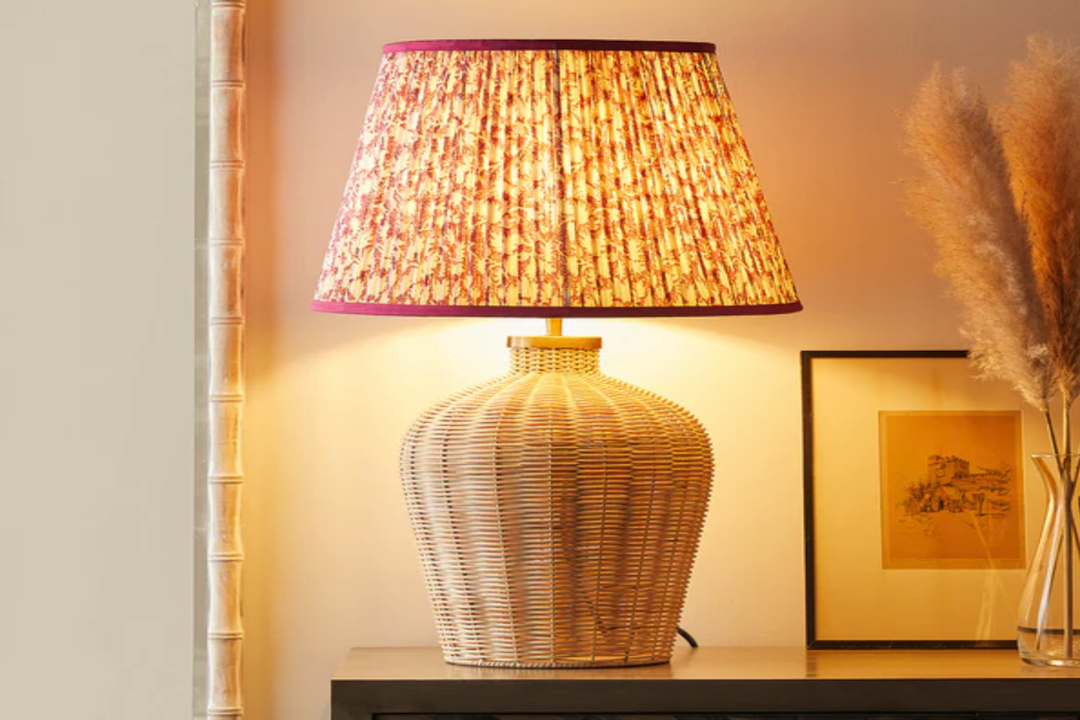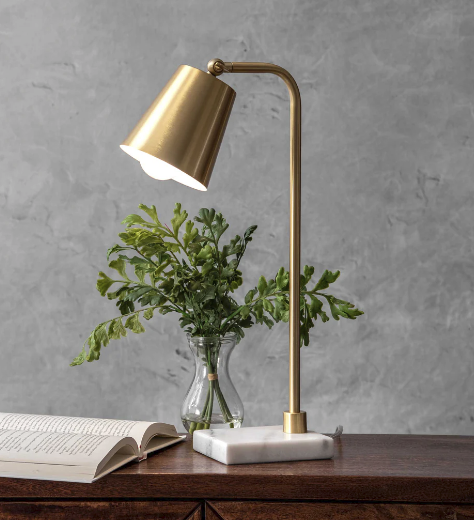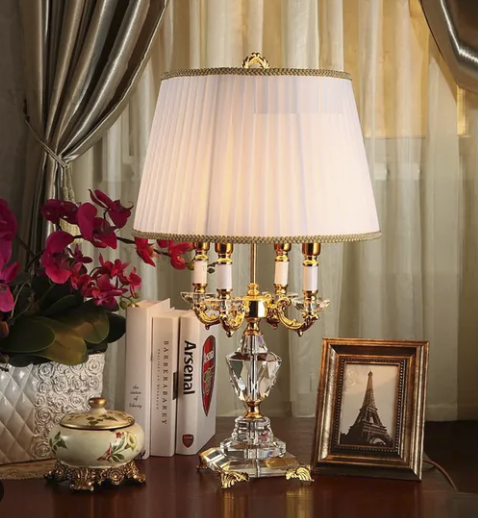Rattan desk lamps have emerged as a popular choice for those seeking to infuse their workspace with a touch of natural elegance. Originating from the tropical vines of the rattan palm, this material is not only aesthetically pleasing but also remarkably versatile. The unique texture and warm tones of rattan can complement a variety of interior design styles, from bohemian to modern minimalist.
As more individuals work from home or seek to create inviting office spaces, the demand for unique lighting solutions has surged, making rattan desk lamps Muzzhome a favored option. The charm of rattan desk lamps lies in their ability to blend functionality with artistry. These lamps can serve as focal points on a desk or side table, casting soft, diffused light that enhances the ambiance of any room.
The intricate weaving patterns of rattan can create beautiful shadows and highlights, adding depth and character to the lighting experience. As we delve deeper into the process of creating a rattan desk lamp, we will explore the various elements that contribute to its design, from material selection to final assembly.
Choosing the Right Rattan Material
Natural Rattan: Embracing the Organic Look
Natural rattan is highly prized for its organic look and feel, showcasing the inherent beauty of the material. It is lightweight yet durable, making it an ideal choice for lamp construction. However, it is essential to consider the finish; untreated rattan may be susceptible to moisture and wear over time, so a protective coating can enhance its longevity.
Stained Rattan: A World of Color Options
Stained rattan offers a different aesthetic appeal, allowing for a broader range of color options that can match specific decor themes. This type of rattan can be found in rich browns, soft whites, or even vibrant hues, providing flexibility in design.
Synthetic Rattan: Durability and Low Maintenance
Synthetic rattan, often made from high-density polyethylene (HDPE), mimics the appearance of natural rattan while offering increased durability and resistance to environmental factors. This material is particularly advantageous for those who desire a low-maintenance option that retains its beauty over time.
Designing the Lamp Base
The lamp base is a critical component that not only supports the structure but also contributes significantly to the overall design aesthetic. When designing a rattan desk lamp base, one must consider both stability and style. A sturdy base ensures that the lamp remains upright and functional, while an aesthetically pleasing design enhances the visual appeal.
Common materials for lamp bases include wood, metal, or even ceramic, each offering distinct characteristics. For instance, a wooden base can provide warmth and a rustic charm that complements the natural fibers of rattan. A simple cylindrical or square wooden base can serve as an excellent foundation for a more intricate rattan shade.
Alternatively, a metal base can introduce a modern edge to the design; sleek finishes such as brushed nickel or matte black can create a striking contrast against the organic texture of rattan. The choice of base material should align with the overall theme of the workspace while ensuring that it harmonizes with the chosen lampshade.
Selecting the Perfect Lampshade
The lampshade is arguably one of the most defining features of a rattan desk lamp, influencing both its functionality and aesthetic appeal. When selecting a lampshade, one must consider factors such as size, shape, and weave pattern. The size of the lampshade should be proportionate to the base; an oversized shade on a small base may appear unbalanced, while a tiny shade on a large base can look lost.
A general rule of thumb is that the diameter of the shade should be about two-thirds the height of the base. Shape plays a crucial role in how light is diffused throughout the space. A drum-shaped shade offers a contemporary look and provides even illumination, while a tapered or conical shade can create focused light for tasks such as reading or writing.
The weave pattern of the rattan can also affect light diffusion; tighter weaves may produce softer light, while looser weaves can create interesting shadow patterns on surrounding surfaces. Additionally, one might consider lining the inside of the shade with fabric or paper to enhance light quality and add an extra layer of design.
Adding Personalized Touches
Personalization is what transforms a standard rattan desk lamp into a unique piece that reflects individual style and taste. There are numerous ways to infuse personal touches into your lamp design. One approach is to incorporate decorative elements such as beads, shells, or even fabric remnants into the rattan weaving process.
These additions can create visual interest and tell a story about your personal journey or interests. Another way to personalize your lamp is through color choices and finishes. If you opt for stained rattan, consider selecting colors that resonate with your personality or match your workspace decor.
You might also choose to paint or stain the lamp base in a color that complements or contrasts with the shade. Furthermore, adding custom labels or tags can provide an additional layer of personalization; these could include your name or an inspiring quote that motivates you during work hours.
Assembling the Lamp
Once all components are selected and personalized touches are added, it’s time to assemble your rattan desk lamp. This process requires careful attention to detail to ensure that each part fits together seamlessly and functions correctly. Begin by securing the lamp base to ensure stability; if using screws or bolts, make sure they are tightened adequately without over-tightening, which could damage the materials.
Next, attach the socket for the light bulb to the base according to manufacturer instructions. It’s crucial to ensure that all electrical components are properly installed and safe for use. After securing the socket, carefully position the lampshade onto the base.
Depending on your design choice, this may involve using clips or brackets to hold it in place securely. Take your time during this step; ensuring everything is aligned correctly will enhance both functionality and aesthetics.
Testing and Adjusting the Lamp
With your rattan desk lamp fully assembled, it’s essential to conduct thorough testing before placing it in your workspace. Begin by inserting a light bulb into the socket and plugging in the lamp to check for functionality. Observe how well it illuminates your workspace; if it feels too dim or harsh, consider experimenting with different wattages or types of bulbs.
LED bulbs are often recommended for their energy efficiency and longevity while providing various color temperatures that can affect mood and productivity. Adjustments may also be necessary regarding the positioning of the lampshade or even its height relative to your workspace. If shadows are cast in undesirable areas or if light is not distributed evenly across your desk, consider repositioning either the shade or base slightly until you achieve optimal lighting conditions.
This iterative process ensures that your lamp not only looks good but also serves its primary function effectively.
Final Touches and Displaying Your Unique Creation
After testing and making necessary adjustments, it’s time to add final touches before displaying your unique rattan desk lamp in your workspace. Consider incorporating additional decorative elements around your lamp area that complement its design—this could include plants, books, or other decorative items that resonate with your personal style. Arranging these elements thoughtfully can create an inviting atmosphere that enhances productivity.
Finally, take pride in showcasing your creation! Whether placed on your desk at home or in an office setting, your rattan desk lamp stands as a testament to your creativity and craftsmanship. The warm glow it emits not only illuminates your workspace but also serves as a reminder of your ability to blend functionality with artistry in everyday life.
Each time you switch it on, you’ll be reminded of the journey you undertook to create something truly special—an object that reflects not just light but also your unique personality and taste.





